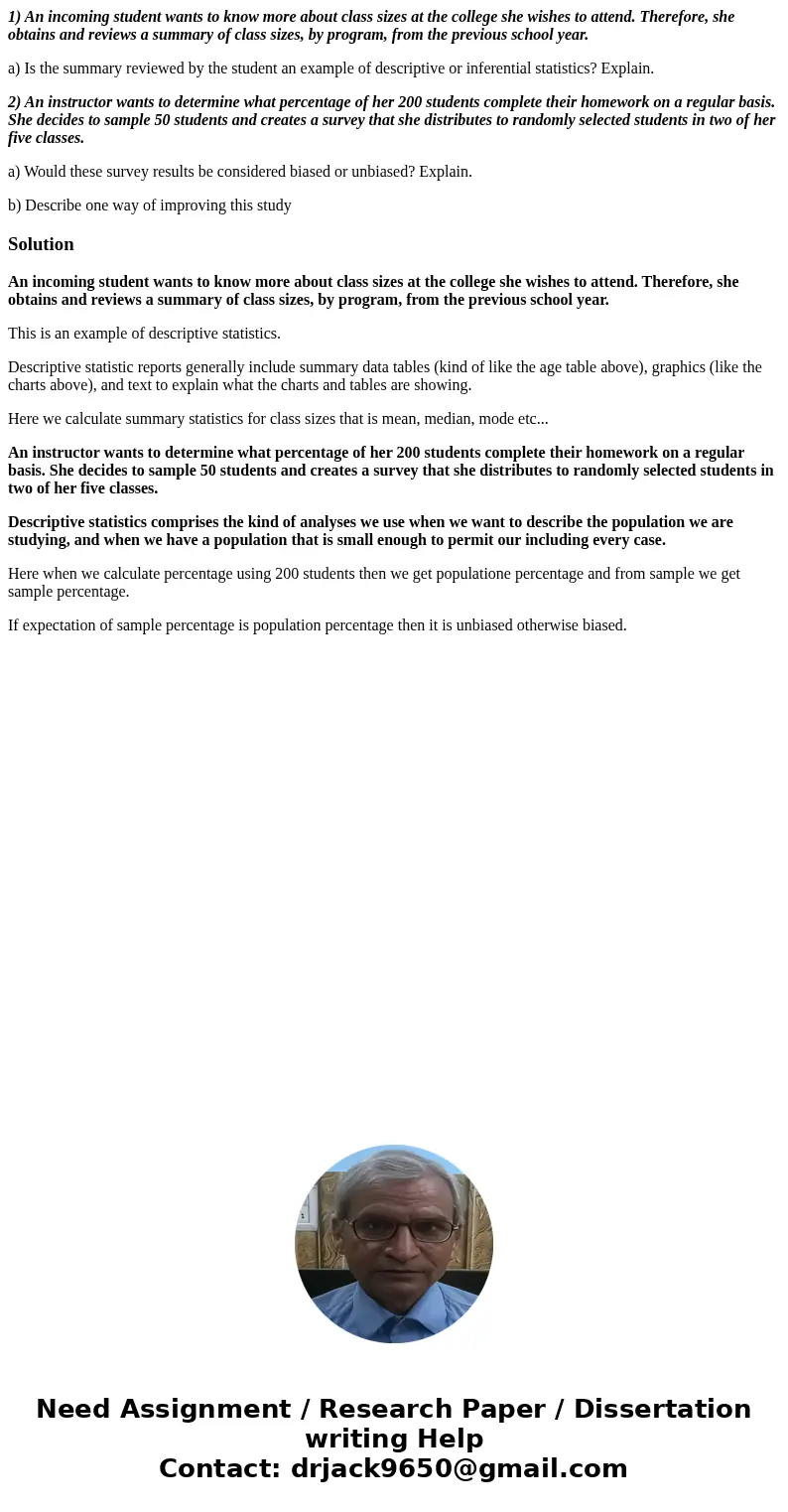1 An incoming student wants to know more about class sizes a
1) An incoming student wants to know more about class sizes at the college she wishes to attend. Therefore, she obtains and reviews a summary of class sizes, by program, from the previous school year.
a) Is the summary reviewed by the student an example of descriptive or inferential statistics? Explain.
2) An instructor wants to determine what percentage of her 200 students complete their homework on a regular basis. She decides to sample 50 students and creates a survey that she distributes to randomly selected students in two of her five classes.
a) Would these survey results be considered biased or unbiased? Explain.
b) Describe one way of improving this study
Solution
An incoming student wants to know more about class sizes at the college she wishes to attend. Therefore, she obtains and reviews a summary of class sizes, by program, from the previous school year.
This is an example of descriptive statistics.
Descriptive statistic reports generally include summary data tables (kind of like the age table above), graphics (like the charts above), and text to explain what the charts and tables are showing.
Here we calculate summary statistics for class sizes that is mean, median, mode etc...
An instructor wants to determine what percentage of her 200 students complete their homework on a regular basis. She decides to sample 50 students and creates a survey that she distributes to randomly selected students in two of her five classes.
Descriptive statistics comprises the kind of analyses we use when we want to describe the population we are studying, and when we have a population that is small enough to permit our including every case.
Here when we calculate percentage using 200 students then we get populatione percentage and from sample we get sample percentage.
If expectation of sample percentage is population percentage then it is unbiased otherwise biased.

 Homework Sourse
Homework Sourse